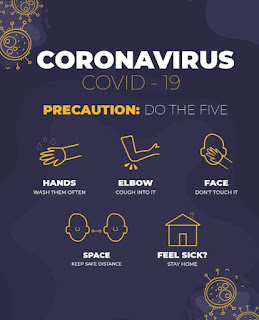Public health Infrastructure and a blame game!!
Introduction
SARS-CoV-2 was declared a pandemic by the World Health Organization(WHO) on March 11, 2020.
The SARS-CoV2 infection causes COVID-19. During the initial days of the pandemic doctors hardly knew how best to treat patients with COVID-19. Therefore, in the first few months, clinical care was dominated by estimation, anecdotes ,and dogma. One year on, there is still rife misinformation on cures for COVID-19, with multivitamins, mineral supplements, steam inhalation(although good but not enough), and drugs such as hydroxychloroquine and ivermectin, all of which have not been corroborated to treat COVID-19 are still being prescribed. Another widely used product called immunity booster is "Coronil-kit". People are extensively using these nowadays without any medical prescription.
Fragile Infrastructure
Worst pandemic in a century has demonstrated the importance of public health and healthcare in times of a health crisis. According to the National Health profile 2019, there were an estimated 0.55 government hospital beds for 1000 people. Prolonged underinvestment in Public health infrastructure left thousands seeking help from highly commercialized private hospitals with little regulatory oversight, leading to out-of-pocket expenses for middle and poor-class people.
Although the healthcare capability in India ranks among the world's best, it is a different story when it comes to public health. There is a difference between the two. Healthcare refers to the transaction between one caregiver and one ill person at a time, which means the user is an ill person and therapy is the mainstay. Whereas in public health, the client is the community at large and the goal is ailment prevention and control. We failed in maintaining the infrastructure for public health. Disease control is the calculated, intervention-based and quantified reduction of disease burden. It should be data-driven. Data is required for real-time monitoring to track the control trajectory of highly prevalent infectious diseases.
Blunder and a blame game
Who should be held responsible for the devastating second wave of COVID-19? The Central government, the state government ,or public itself for being complacent? The answer is the collective sloppy nature of all three entities has resulted in this deadly second wave. "The virus has gone"- January 2021. "No, it hasn't and is back with juggernaut" - April 2021. These scene changes are similar to what happens in village strife or urban brawls that feature in newspapers across India. While leaders were debating whether India is experiencing a second wave or Delhi is experiencing the fourth wave, the virus was spreading its foot rapidly all over the country. The markets were crowded, the movement was unrestricted, and election campaigns were run with high spirits. The virus had an open road to travel, with only the welcome arches missing.
India, being a federal structure shares powers between the Union government ,and the State government and health comes under the state subject but battling with COVID-19 cannot be done single-handed by the state government as various procurements and distribution are done through central government channels only. For example; Procurement and distribution of oxygen and vaccines are done by the central government only. Various state governments were blaming central government for irregular supply of oxygen and vaccines ,and central government blamed state government for not augmenting oxygen facilities. In the battle of words, between the central and the state government, the ultimate loser was the public who were left to manage on their own in this tough time.
We need to move now beyond reflections and remonstration on what went wrong, instead design and deliver a stalwart response that can help us to rapidly regain control and limit the damage.
Steps to control the damage
1.) More curbs, and increased testing
The most essential step is to prevent super spreader events. Crowding, whether outdoor or indoor, offers the virus an opportunity to seed itself among many exposed persons who then carries to other places to prolong the chain of transmission. Use of smart testing and tracing is required although viral tests are useful but have limitations. A single RT-PCR test has an accuracy level of approximately 70 percent which means it can miss between 30%-35% of cases, due to limitations posed by swab collection, laboratory competency, testing too late or too early during the infection when a replicating virus is not detectable.
2.) Speeding up vaccine rollout
Vaccine rollout must be increased by many folds to reduce the severity of infection. The benefits of vaccines available in India are limited to protection against severe disease, not infection. This information must be conveyed clearly to the politicians, the public ,and the media so that the wrong expectations of complete protection against infection do not lead to complacent behavior or an outcry of vaccine failure. Getting more vaccines into the supply chain must be the utmost priority of the government and waiving the requirement of a bridging trial for domestic manufacture of vaccines approved by WHO, subject to submissions of full trial data to our regulators.
3.) Social involvement
Citizen engagement is important for a successful pandemic response. Involving people, not just instructing is the key. Providing empathetic social support is necessary. District authorities concerned must identify vulnerable people and families who may suffer hardships due to loss of shelter, income, and high out-of-pocket expenses incurred due to health-care costs.
"When outside situations go against us we need to stand one hundred percent for ourselves, Challenging times are not necessarily a calamity. These are the times when human beings have to rise beyond their limitations and ride the challenges to become a glorious generation."
Do not spread fear, do not panic, join hands and create positive vibrations. Social solidarity must become the soul of our pandemic response.



Comments
Post a Comment